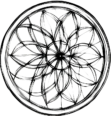Particles and waves reveal the hidden cycles of life—a philosophical tool, a marvel of physics, and a chamber for reflection. They prompt questions about reality, circularity, fertility, light, air, and waste.
Prinzessinnengarten, Berlin. 2019
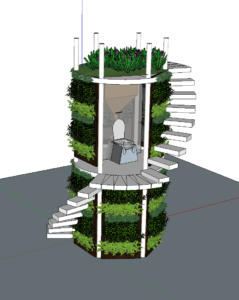
Berlin, Germany
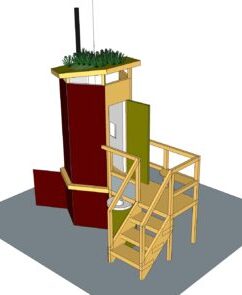
made for “Light, Air, Shit.”
Perspectives on Ecology and Modernity.
nGbK
Berlin, Germany
Close the door, have a seat, contribute, and pull a lever.
The window blinds draw down as the aperture behind your head slides open. A stream of light rushes through the glass lens, casting an inverted, moving, color image of the world outside onto the walls across. Partially focused and partially blurry, the image dances. The Camera Obscura, an ancient device of wonder, invites contemplation of reality and a questioning towards what is possible.
This composting toilet separates solids and liquids into different containers. The urine can be harvested for nutrients, while the solids remain inside the industrial steel barrel. Once full, the barrel is closed, and the material is safely composted into rich plant fertilizer.
The Camera Obscura, demonstrates a natural phenomena of light, likely observed in ancient times. Here it invites us to consider the Nature-Based Solution of composting human waste, an ancient way of growing healthy soil. Could it be an invitation from ancient times to see the light through new eyes?
Why: The modern sewage system can be celebrated as a marvel of civilization. However, considering global soil erosion, fertility loss, and fresh water shortages—coupled with the increasing demand for food and clean water—there is a pressing need for creative ways to conserve resources and reconnect fertility cycles in a natural, healthy flow. This is the subject of this exploration, It is not intended to replace our existing systems but to complement them and provide healthy options where they do not exist.
Composting toilets are often seen as unpleasant. It is common to find critters crawling or flying within, cob webs, and sometimes offensive odors. Ususally the experience involves a view of the pile of feces underneath perhaps invoking anxiety of the consequence of dropping something valuable inside by accident. They are also too commonly made of salvaged materials that are not conducive to hygene. My goal is to explore how a toilet that is clean, safe, and aesthetically pleasing to both use and maintain could affect its acceptance and even joy of use. While ensuring the fertility they collect remains locally available and distributed.
Additionaly, Composting toilets use no water. (only for hand washing) preserving this vital life resource. In some parts of the world, a water based toilet created dangerous public hygene conditions because of the use of open sewer canals.
With the exponential growth of scientific knowledge and manufacturing technology in recent decades, I see the potential to apply such advancements to issues we often push aside—like our waste—and its relationship to the sustainability of life systems in our environment.
Modern living complexity seems to have distanced us from our own biology. Perhaps through complexity, we can also find our way back to connection—with ourselves, each other, and life in general.
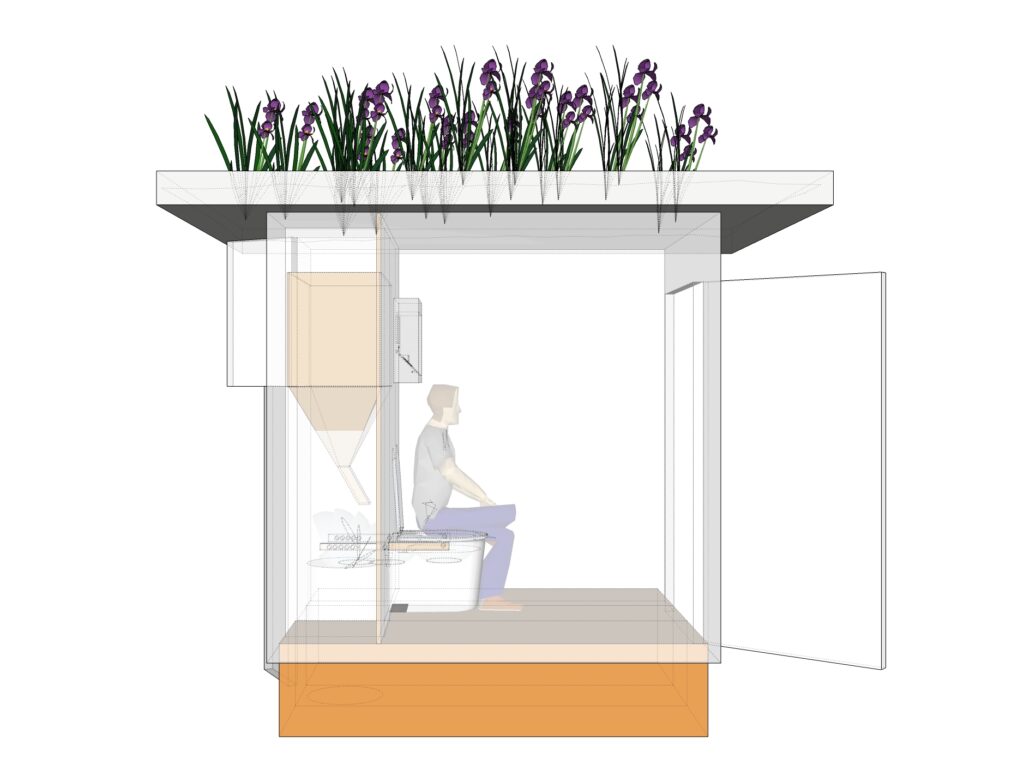
In a quest for developing devices of wonder, joy and sustainability, I explore the humble toilet.
This project was part of Licht Luft Scheiße, Perspectives on Ecology and Modernity at NGBK. Berlin.
https://archiv.ngbk.de/en/projekte/licht-luft-scheisse
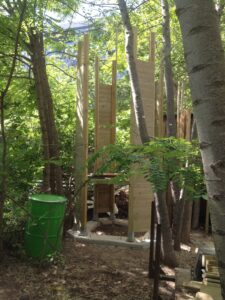
Foundation in place and the structure emerging. The barrel, a waste item from industry, awaits it’s future re-purpose.
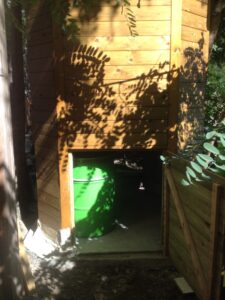
The service door opens to the underside of the structure. The barrel is in place directly under the seat. A removeable sleeve between the top of the barrel and the bottom of the seat ensure that critters do not enter.. preventing disease vectors.
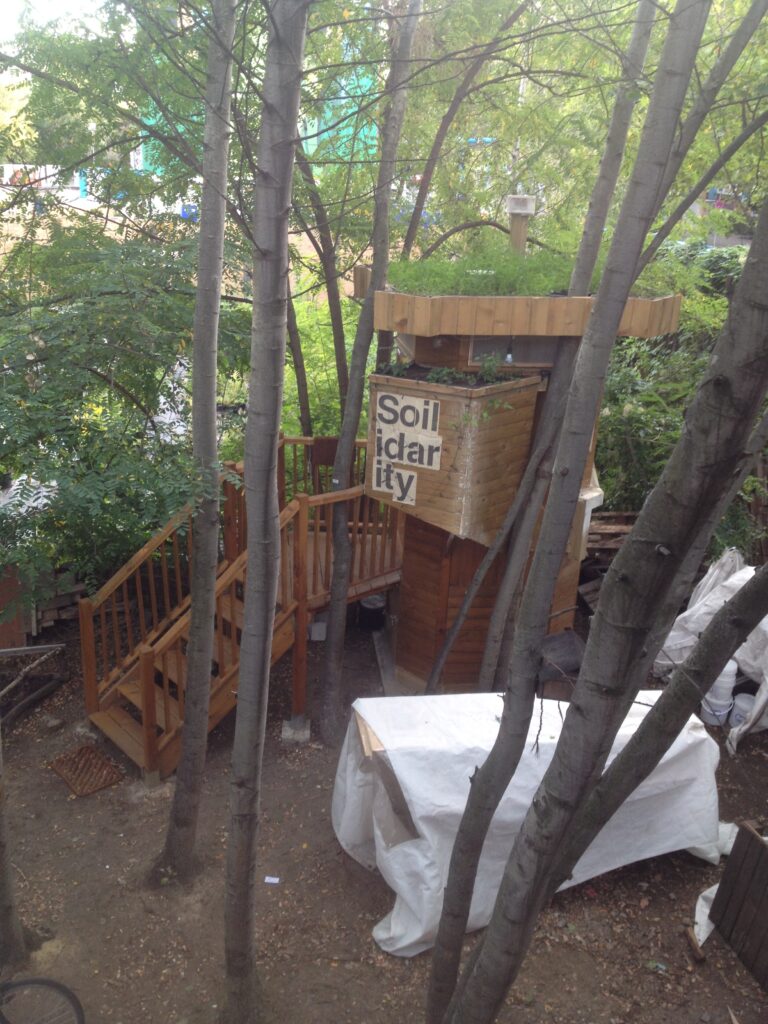
Complete and operational. A green roof is planted with local plant varieties. In “Soil idarity” with all living beings, the structure was built within and around a cluster of trees. No trees were harmed.
